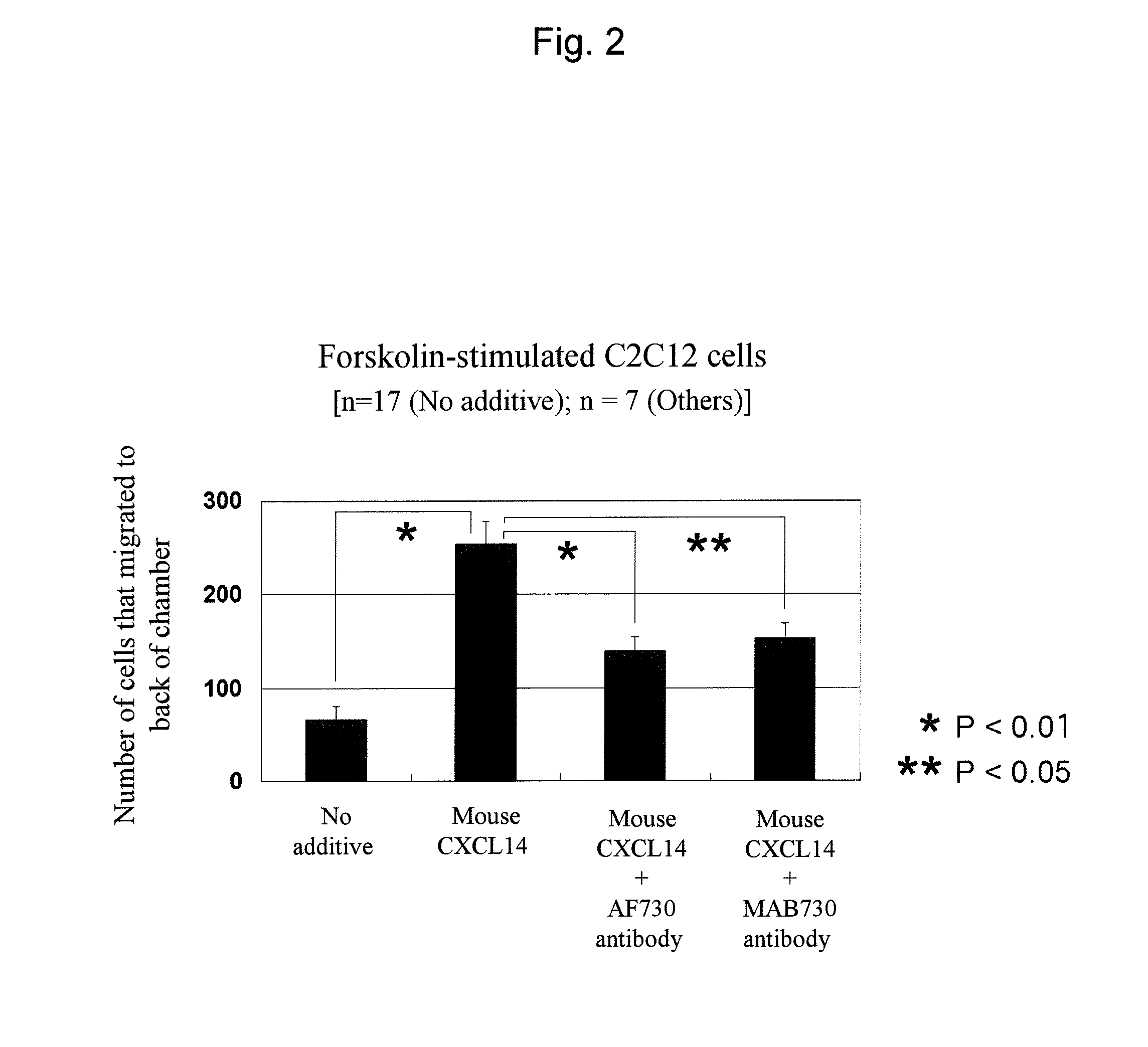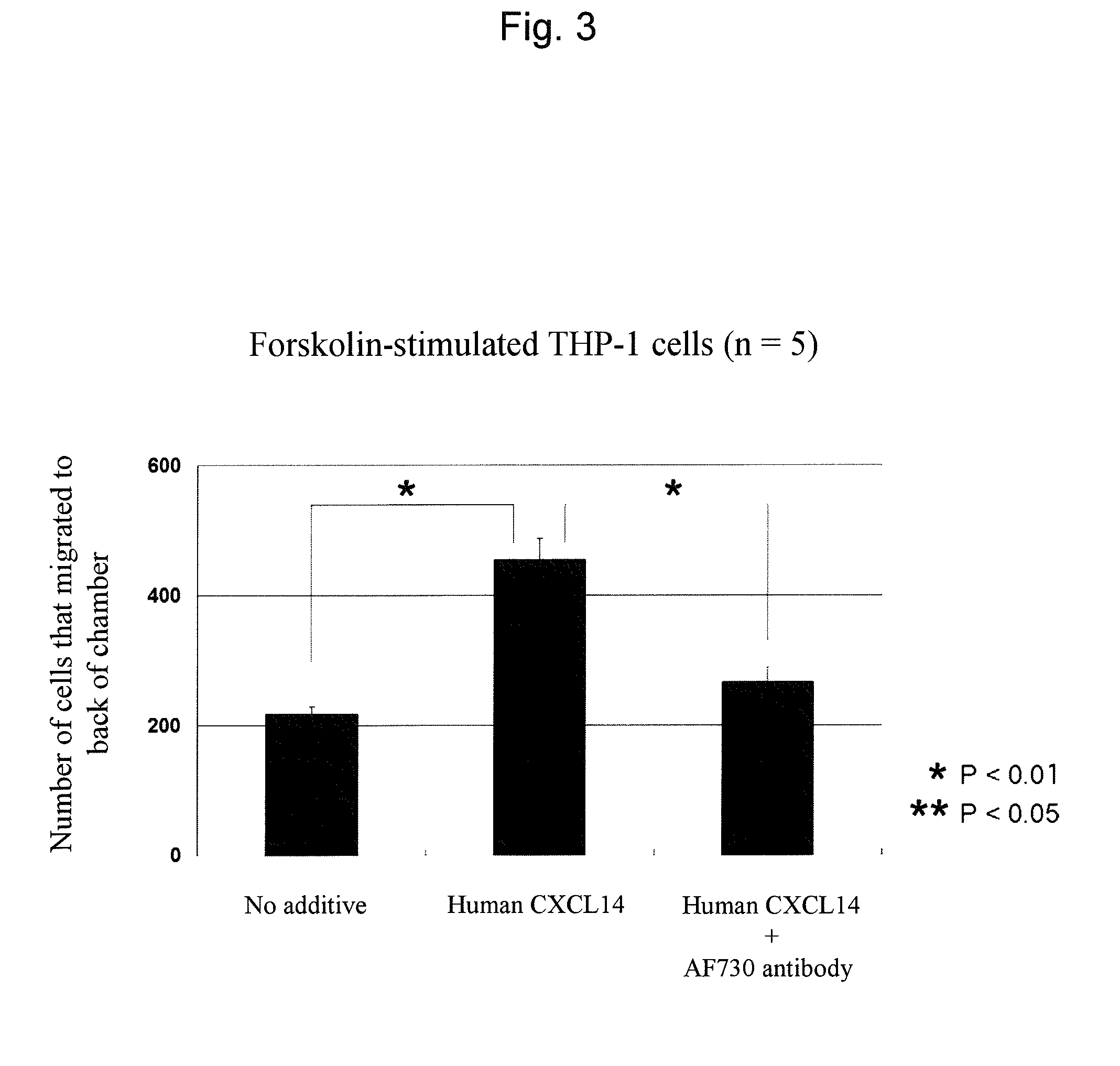Anti-brak (cxcl14) human monoclonal antibody and use thereof
- Summary
- Abstract
- Description
- Claims
- Application Information
AI Technical Summary
Benefits of technology
Problems solved by technology
Method used
Image
Examples
example 1
Materials and Methods
[0191]1. Chemotaxis Assay
[0192]Mouse skeletal muscle-derived myoblast cell line C2C12 (obtained from the American Type Culture Collection (ATCC)) and human monocytic leukemia cell line THP-1 (obtained from the Health Science Research Resources Bank, HSRRB), each obtained from an official cell bank, were each cultured in a Dulbecco's modifies Eagle's medium (DMEM) containing 10% fetal bovine serum or an RPMI-1640 medium containing 10% fetal bovine serum, and the cells at the log growth phase were used for the experiments. 2×105 C2C12 cells were seeded on a 100-mm plate, cultured at 37° C. overnight, added with forskolin (Sigma) to a final concentration of 20 μM and cultured at 37° C. for another two days. 106 THP-1 cells were seeded on a 100-mm plate, simultaneously added with forskolin (Sigma) to a final concentration of 20 μM and cultured at 37° C. for two days. The forskolin is a reagent that increases the intracellular cAMP concentration, which activates A ki...
PUM
| Property | Measurement | Unit |
|---|---|---|
| Electrical resistance | aaaaa | aaaaa |
Abstract
Description
Claims
Application Information
 Login to View More
Login to View More - R&D
- Intellectual Property
- Life Sciences
- Materials
- Tech Scout
- Unparalleled Data Quality
- Higher Quality Content
- 60% Fewer Hallucinations
Browse by: Latest US Patents, China's latest patents, Technical Efficacy Thesaurus, Application Domain, Technology Topic, Popular Technical Reports.
© 2025 PatSnap. All rights reserved.Legal|Privacy policy|Modern Slavery Act Transparency Statement|Sitemap|About US| Contact US: help@patsnap.com



